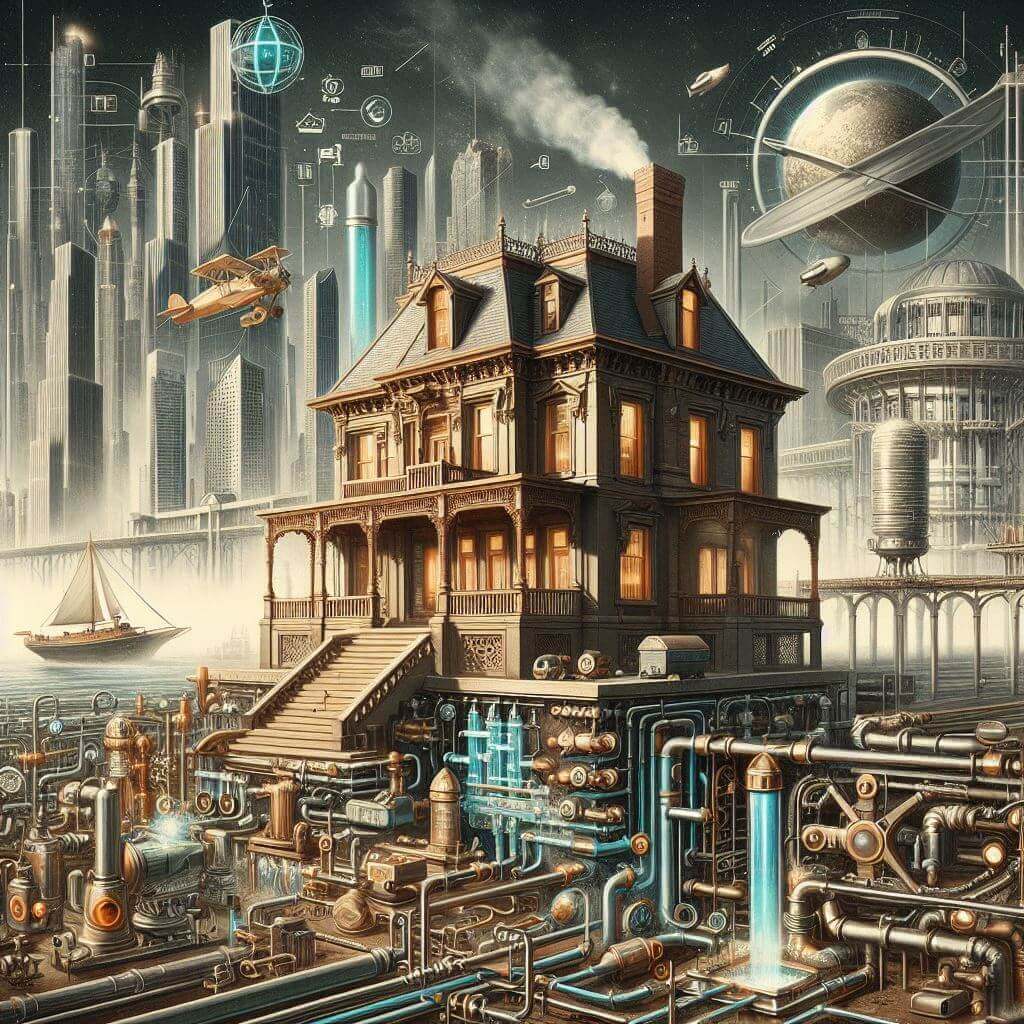The Ultimate Guide to Home Plumbing Inspections
When it comes to homeownership, one crucial aspect often overlooked is the plumbing system. Conducting a comprehensive home plumbing inspection should be a priority for every homeowner. This guide will delve into the best practices for plumbing inspection, providing an essential plumbing checklist and a DIY plumbing inspection guide for homeowners.
Understanding the Importance of Plumbing Inspections
Plumbing inspections are the unsung heroes of homeownership. Beyond being a mere formality, these inspections are the backbone of a well-functioning home. A comprehensive home plumbing inspection is like a health check-up for your house, ensuring everything runs smoothly and preventing potential disasters down the line.
Conducting a thorough plumbing assessment at home might seem like a minor task, but it’s a proactive measure that can save you from major headaches. By prioritizing a plumbing inspection for homeowners, you’re not just ensuring water flows properly; you’re safeguarding your property against water damage, leaks, and costly repairs.
Transitioning from a reactive to a proactive stance is vital. Many homeowners overlook the gradual wear and tear that their plumbing systems endure. However, a comprehensive home plumbing check allows you to catch these issues early. From minor leaks to potential blockages, addressing them in their infancy prevents significant damages that could disrupt your daily life.
Ensuring a safe and habitable environment isn’t just about aesthetics; it’s about functionality too. Identifying and fixing plumbing problems in houses doesn’t just maintain water flow; it safeguards your family’s health. Undetected leaks can foster mold growth, leading to respiratory issues. A detailed home plumbing checklist for homeowners isn’t just a list; it’s a shield against unseen dangers lurking within your walls.
In today’s DIY culture, a DIY plumbing inspection guide empowers homeowners. It educates on the intricacies of your home’s inner workings. Learning to recognize the signs of potential issues during a plumbing assessment for homes not only saves money but also instills a sense of ownership and control over your living space.
The Checklist: Step-by-Step Guide
Preparation Stage: Gathering Tools
Before embarking on your plumbing assessment for homes, assembling the right tools is paramount. Having essentials like wrenches, pliers, and a flashlight at hand sets the stage for a smooth inspection process. These tools aren’t just for professionals; they’re your companions in becoming a savvy homeowner.
Transitioning to the pipe inspection for houses phase becomes seamless when you’re equipped with the right gear. A flashlight, for instance, illuminates even the darkest corners, revealing potential leaks or corrosion. It’s not just about checking; it’s about being thorough in your residential piping checklist assessment.
Don’t underestimate the significance of preparation. The initial home plumbing checklist isn’t solely about tools; it’s about readiness. Investing time in this phase streamlines the inspection process, allowing you to focus on the fixture assessment for plumbing without interruptions.
Moreover, this preparation stage isn’t just about physical tools; it’s also about mental readiness. Understanding the basics of a comprehensive home plumbing inspection before commencing ensures a more efficient and productive inspection.
Exterior Inspection: Evaluating Piping Systems
An integral part of a comprehensive home plumbing inspection is the scrutiny of your exterior piping systems. These often-overlooked pipelines play a vital role in maintaining your home’s functionality. Pipe inspection for houses begins with an external evaluation, focusing on exposed pipes and connections.
Transitioning into the residential piping checklist phase involves a systematic approach. Look for any signs of corrosion, rust, or leaks. These seemingly minor issues can escalate into significant problems if left unattended. Remember, a thorough plumbing inspection for homeowners doesn’t merely scratch the surface; it digs deep into potential vulnerabilities.
Understanding the layout and condition of your exterior pipes is crucial. It’s not just about conducting a superficial examination; it’s about recognizing the intricacies of your property plumbing review. This knowledge empowers you to identify irregularities and potential weak points in your household plumbing evaluation.
Assessing the exterior piping systems isn’t just about detecting visible issues; it’s about ensuring the longevity and efficiency of your residential plumbing system. Recognizing potential problems early on allows for timely intervention, safeguarding against future plumbing catastrophes.
Interior Evaluation: Assessing Fixtures and Systems
As you transition from the external to the internal realm of your home, the focus shifts to fixture assessment for plumbing. This phase involves a meticulous examination of the fixtures and systems within your household. From faucets to toilets, every element plays a pivotal role in your residential plumbing maintenance.
The plumbing inspection for homeowners involves keen observation. Check faucets for drips or leaks and ensure that water flows smoothly. A malfunctioning fixture might seem insignificant, but it could indicate underlying issues within your household plumbing evaluation.
Transitioning seamlessly into this phase of the home maintenance plumbing checklist involves a methodical approach. Consider not just the fixtures but also the systems that support them. Any irregularities in water pressure or temperature could signify potential problems in your property plumbing review.
This internal assessment isn’t solely about identifying issues; it’s about ensuring the efficiency and functionality of your residential plumbing system. Recognizing and addressing minor issues during this comprehensive home plumbing inspection phase prevents larger, costlier problems down the line.

Identifying Common Issues
Leakage Detection: Preventative Measures
One of the most common and potentially damaging issues in a home’s plumbing system is leakage. Spotting and resolving leakage issues early on can save you from extensive water damage and costly repairs. During your plumbing assessment for homes, keep an eye out for water stains, damp areas, or inexplicable increases in your water bill. These could be telltale signs of leaks that need immediate attention.
Transitioning into the phase of leakage detection and prevention involves more than just fixing visible leaks. Consider employing preventative measures, such as regular inspections and maintenance, to safeguard your home’s plumbing. An often overlooked yet effective method is using leak detection devices that can alert you to potential leaks before they become a major concern in your household plumbing evaluation.
Moreover, understanding the causes of leaks is crucial in preventing them. Factors like old and corroded pipes, high water pressure, or temperature fluctuations can contribute to leaks. As a homeowner conducting a comprehensive home plumbing inspection, knowing these potential triggers empowers you to take proactive measures.
Addressing leaks promptly isn’t merely about fixing a problem; it’s about preserving the integrity of your residential plumbing system. Implementing preventative measures identified during your property plumbing review ensures a healthier, more efficient plumbing setup for your home.
Drainage Examination: Sewage System Inspection
Moving beyond visible fixtures and pipes, conducting a thorough drainage examination in homes is pivotal. Your sewage system plays a significant role in maintaining a hygienic and functional household. During your plumbing inspection for homeowners, pay attention to the drainage patterns within and around your home.
Transitioning into the sewage system inspection phase involves more than just visual inspection. Consider employing techniques like water flow tests to ensure proper drainage. Slow drains or gurgling noises might indicate potential issues in your residential piping checklist, requiring immediate attention during your property plumbing review.
Moreover, it’s essential to understand that drainage issues aren’t solely limited to internal systems. External factors like tree roots infiltrating underground pipes or improper grading around your home can also contribute to drainage problems. As a homeowner performing a comprehensive home plumbing check, being aware of these factors aids in early detection and resolution.
Addressing drainage concerns isn’t just about maintaining a clean environment; it’s about preventing structural damage to your property. Identifying and rectifying drainage issues discovered during your household plumbing evaluation prevents water accumulation, which could lead to foundation problems or basement flooding.
Maintenance Tips and Best Practices
Regular Maintenance: Home Plumbing Guidelines
Maintaining a functional plumbing system isn’t a one-time affair; it requires ongoing care. Embracing home plumbing maintenance guidelines involves adopting a proactive stance towards your household’s plumbing health. Regular inspections, scheduled maintenance, and timely repairs form the cornerstone of a well-maintained system.
Transitioning into the realm of residential plumbing maintenance tips involves a routine that goes beyond reactive fixes. Implement preventive measures like periodically flushing drains with hot water or vinegar to prevent clogs. These simple yet effective steps, often overlooked in a comprehensive home plumbing inspection, ensure smooth water flow.
Moreover, don’t neglect the importance of checking for leaks. Even seemingly minor drips can lead to wastage of water and escalate into larger issues over time. During your plumbing assessment for homes, allocate time to inspect all visible pipes, joints, and faucets for any signs of leakage.
Addressing minor issues promptly, as part of your household plumbing evaluation, prevents them from becoming major headaches. A stitch in time indeed saves nine when it comes to your residential plumbing system. Adhering to these maintenance guidelines not only sustains efficiency but also saves you from potential costly repairs in the long run.
Addressing Problems: Fixing Plumbing Issues
Encountering plumbing issues during a home plumbing inspection can be daunting, but prompt action is key. Identifying and fixing plumbing problems in houses requires a strategic approach. Transitioning from detection to resolution involves understanding the root cause and implementing effective solutions.
Firstly, when you detect a problem during your plumbing assessment for homes, take a moment to assess its severity. Not all issues demand immediate attention. Prioritize those that pose an immediate threat to the integrity of your residential plumbing system, such as significant leaks or burst pipes.
Moving on to resolving these issues, sometimes a DIY approach suffices. Simple tasks like tightening loose connections or replacing worn-out washers can be tackled without professional assistance. This hands-on approach, often part of a DIY plumbing inspection guide, empowers homeowners to take charge of minor repairs.
However, for complex problems or those beyond your expertise, seeking professional help is advisable. Qualified plumbers possess the necessary skills and tools to address intricate issues in your household plumbing evaluation. Don’t hesitate to enlist their expertise for a thorough and lasting resolution.
The goal of addressing plumbing issues isn’t merely about fixing what’s broken; it’s about restoring the functionality and efficiency of your home’s plumbing. Taking proactive steps during your comprehensive home plumbing inspection ensures a smooth-running system that contributes to a comfortable living space.
Prioritizing Home Plumbing Inspections
Making plumbing inspection for homeowners a priority is more than just a routine task; it’s a proactive measure that safeguards your home. Transitioning from a reactive stance to a proactive one involves understanding the significance of a comprehensive home plumbing check.
Firstly, scheduling regular inspections, as part of your home maintenance plumbing checklist, prevents minor issues from snowballing into major concerns. Transitioning seamlessly into this routine ensures you’re always on top of potential problems, fostering a sense of control over your residential plumbing system.
Moreover, prioritizing inspections isn’t just about mitigating risks; it’s about optimizing your home’s functionality. By conducting routine plumbing assessments for homes, you ensure an efficient water supply, proper drainage, and a well-maintained sewage system, contributing to a comfortable living environment.
Furthermore, investing time and effort in a detailed home plumbing checklist for homeowners isn’t a mere task on the to-do list; it’s an investment in the longevity of your home. Regular inspections contribute to the preservation of your property’s value by identifying and addressing issues before they escalate.
The key to prioritizing home plumbing inspections is recognizing that they’re not just about fixing problems; they’re about preventing them. Embracing this proactive approach ensures a healthier, more efficient, and cost-effective residential plumbing system for your home.
This ultimate plumbing checklist is a valuable resource for evaluating residential plumbing systems. Remember, regular inspections and adherence to best practices for evaluating home plumbing systems are pivotal in maintaining a seamless home





